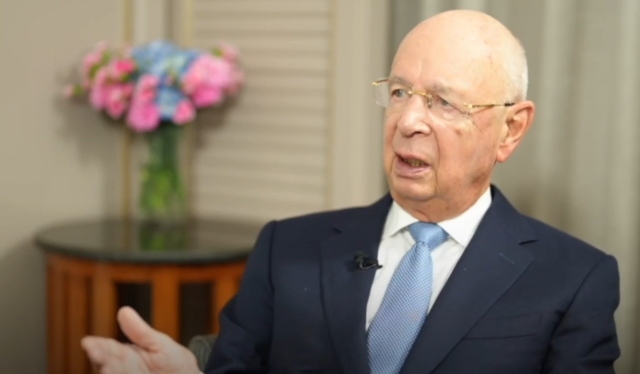11 Countries have already adopted central bank digital currencies and 105 others are considering it
11/30/2022 / By Ramon Tomey

Central bank digital currencies (CBDCs) are already in use in 11 countries, and 105 other nations are considering adopting the technology.
Washington, D.C.-based think tank The Atlantic Council (TAC) defined a CBDC as “virtual money backed and issued by a central bank.” It named 10 countries in the Caribbean, alongside the West African country of Nigeria, as early adopters of CBDCs. The CBDCs in active use were:
- eNaira (Nigeria)
- Sand Dollar (The Bahamas)
- JAM-DEX (Jamaica)
- D-Cash (Anguilla, Antigua and Barbuda, Dominica, Grenada, Montserrat, Saint Kitts and Nevis, Saint Lucia and Saint Vincent and the Grenadines)
The first three CBDCs were administered by their countries’ respective financial authorities – the Central Bank of Nigeria (CBN), the Central Bank of the Bahamas and the Bank of Jamaica. Meanwhile, the Eastern Caribbean Central Bank is in charge of the D-Cash digital currency used by the eight nations.
A piece by Visual Capitalist pointed out that Nigeria, which pioneered CBDCs with its eNaira in October 2021, does not exactly see widespread use among Nigerians.
“Half of the country’s 200 million population is believed to have no access to bank accounts,” it stated. “Conversely, 33.4 million Nigerians were reported to be trading or owning crypto assets, despite the CBN’s attempts to restrict usage.”
“Adoption of the eNaira has so far been relatively sluggish. The eNaira app has accumulated 700,000 downloads as of April, equal to 0.35 percent of the population,” the article added. It clarified, however, that not all of the downloads came from users based in Nigeria.
Meanwhile, TAC cited 105 other countries considering CBDCs. These include Sweden, which tested an e-krona in 2020; Uruguay, which announced pilot tests to issue digital Uruguayan pesos as early as 2017; and China, which has been running tests for a digital yuan since April 2020. (Related: Bit-Yuan? China creates its own digital currency.)
CBDCs usher in digital surveillance
Bo Li, the deputy managing director of the International Monetary Fund (IMF) and former deputy governor of the People’s Bank of China, spoke about the “programmability” of digital currencies at a recent IMF seminar.
“CBDC can improve financial inclusion through what we call programmability. That is, CBDC can allow government agencies and private sector players to program, create smart contracts [or] allow targeted policy functions. For example – welfare payment, consumption coupon [and] food stamps,” he said.
“By programming CBDC, money can be precisely targeted to what kind of people can own and what kind of use this money can be utilized.”
However, Scottish communications and sponsorship consultant James Melville raised red flags over the adoption of CBDCs.
“CBDCs are not a conspiracy theory. They are an agenda openly discussed and piloted by many governments around the world,” he wrote in a Twitter thread. “Central banks and governments are nudging us toward this. We cannot let this happen. Wake up before it’s too late.”
Melville also included a short video clip of author and economics professor Saifedean Ammous during his appearance on “The Speakeasy Podcast.” The Scot commented on Ammous’ remarks in the video, saying that the elites want the rest of humanity “to live like 12th-century peasants” while they “keep getting richer and richer.”
“If you take away the most important things in most people’s lives, the most valuable goods, and convince them to live like a 12th-century peasant – eating gruel and surviving on the wind and sun – there is no inflation,” said the professor. “That is, I think, the fiat end game: Poverty for everybody else, unlimited money for a small, select group of people – essentially a government, their cronies and their banks.”
Another warning against CBDCs came in the form of a March 2022 piece in Ars Technica.
“Digital currency issued by a central bank can be used as a tool for government surveillance of citizens and control over their financial transactions,” wrote Jon Brodkin, senior IT reporter for the publication.
Watch this video that explains why CBDCs are problematic.
This video is from the United by Truth channel on Brighteon.com.
More related stories:
US government’s new Central Bank Digital Currency is a fast track to digital concentration camps.
Israel, Norway and Sweden to test central bank digital currencies for cross-border transactions.
Australia to overhaul payments system with digital currency issued by central bank.
Russian central bank to launch pilot program for digital ruble by 2023.
Bank of Mexico to launch digital currency by 2024.
Sources include:
Submit a correction >>
Tagged Under:
big government, bubble, CBDC, central banks, computing, conspiracy, currency reset, cyber war, digital currency, fiat, finance, Glitch, Globalism, government control, information technology, money supply, national security, Orwellian, privacy watch, risk, surveillance, Tyranny
This article may contain statements that reflect the opinion of the author
RECENT NEWS & ARTICLES
COPYRIGHT © 2017 CONSPIRACY NEWS




















